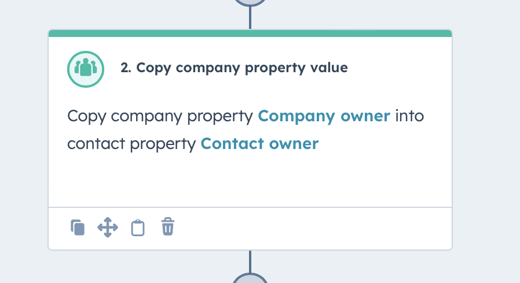As a HubSpot Consultant, most of what I deal with is marketing issues. Despite the platform's impressive growth as a CRM (I think it competes effectively with Salesforce now), marketing tends to be the most prolific users (and usually the entry point for HubSpot clients).
And what does every - and I mean EVERY - marketing team want to build in HubSpot? Effective marketing nurture programs.
Not every contact in your CRM is ready to buy or even consider buying what your company sells. And you can't just leave them in there to gather dust. So you implement a marketing nurture program that does two things:
- Keeps contacts engaged with and aware of your company, so that when they're ready to buy, they come to you
- Emphasizes the effectiveness and timeliness of your solution, thus encouraging them to buy sooner rather than later
Pretty simple right?
Just send out a bunch of emails and people will convert, right?!
Obviously that isn't the case. I've seen very few marketing teams nail nurture, for a variety of reasons. If you want to get it right and keep your database in motion, check out my five fundamentals of marketing nurture.
Email Isn't Enough
Late in 2023, Google, Yahoo and some other email providers announced they were tightening the requirements for deliverability to limit spam. Some of those changes have been walked back (and some people argue they don't really apply to B2B marketers) but the point remains: constant, impersonal email blasts from your domain need to be ending.
Email has been decreasing in reliability for a few years. People get too much irrelevant email and they don't spend as much time in their inboxes thanks to chat platforms like Slack. Now the providers are cracking down - and it isn't just marketing; all those BDR cold outreach emails are going to crush your domain's deliverability.
The point is, you can't rely on email alone. Yes, it's important and when done well (with respect for a person's inbox), super effective.
If you want attention, expand your channels. Explore retargeting and display advertising, have a consistent stream of content and engagement on your social media channels, program helpful chatbots on your website to engage visitors and consider using old school direct mail.
Use email, but keep your streams and audiences tight and watch the metrics like a hawk. Speaking of audiences...
Tighten Up Your CRM
The biggest reason marketing teams are ineffective at nurture program is actually not usually their fault: their CRMs are a mess and no one can make heads or tails within them.
Specifically, the majority of companies cannot reliably answer this question: who is a current customer, and who is not?
Sounds crazy? The vast majority of companies I work with have had this problem.
Yeah, a company with an active subscription is your customer. But who in the company is the customer? The person who signed the contract, the admin, the users? What if someone NEW from that company downloads a white paper - is that person a customer, or a prospect? What if the company is huge with offices all over the world?
What about a company that makes a single purchase from you - they're technically a customer for life, but when do you begin treating them like a prospect again?
Not all audiences should be nurtured the same, so it's critical that everyone in your database fits into one of the following buckets:
- Prospects
- Prospects in active sales dialog (open opportunities)
- Current Customers
- Churned/former Customers
- Partners and resellers
- Non-funnel contacts such as employees, disqualified prospects, competitors, etc
Everyone in the CRM should be in one of these buckets, because every one of these buckets has unique actions you want them to take. The downside here is most marketing teams don't control the CRM - but they absolutely must help facilitate the conversation with their sales team to get definitely, universally-agreed-upon definitions for these segments.
Otherwise, you're going to have to be a bit generic in your calls-to-action, and know that sometimes you're going to invite a current customer to take a demo of a product they already use.
Make Every Interaction an Open Door
In 20 years of building nurture programs, a lot of the successes I've seen are from contacts randomly reaching out without being asked. As in, they reply to an email that was just sharing a blog post. Or clicking an ad that took them to a webinar recording and striking up a live chat while there.
Buying cycles are impossible to predict and a sales conversation can be initiated by just about anyone, regardless of seniority or title. A consistent, helpful presence with contacts means they could begin engaging with you at any given moment.
And yet, in 2024, I still get dozens of emails from no-reply@_____.com every day.
The point is, the email you send out pointing someone at a new whitepaper is just as likely to get a reply asking for pricing as the email you send specifically pointing out your pricing.
Every interaction is a chance to respond, so leave the door open. You WANT people to engage more than anything in the world, whether that's replying to an email, jumping on a live chat, commenting on an Instagram post, even picking up the phone... make it easy for them! Heck, invite them to reply!
I get that monitoring replies is hard and marketing teams are understaffed. Don't go it alone; tools like the HubSpot Conversations Inbox make it easy to capture responses and assign them to Contact Owners and other users.
B2B marketing is a two way conversation with a lot of moving pieces and complexity, make it easier for people to talk to you, not harder.
Clear Entry, Clear Exit Criteria
When does someone enter a nurturing phase?
When does someone exit?
Again, another couple of questions that sound easy on the surface but most companies get it wrong.
Consider churned clients. At what point do they enter a nurture program? As soon as they churn? Or is there a cooling down period before you start trying to win them back?
Then, when do they exit nurture? When they fill out a contact us form? When they schedule a meeting with a sales rep? What about if they meet your MQL points threshold?
And again, what if someone else from their company suddenly is connected to an open opportunity - do you pull everyone from the company out of nurture? (See how your CRM segment definitions affect things across the board?)
Don't leave this to chance. Have clear, precise definitions for when these audiences are enrolled and when they exit.
Where most companies mess up is recognizing the different criteria for each group. Have these encoded in CRM values and, as much as you can, gain cross-department buy-in on this criteria.
Top-funnel contacts can be enrolled with a Marketing Nurture lead status that is set by sales or by HubSpot after a period of inactivity. Mid-Funnel might be triggered with a closed-lost deal. Churned clients can be set to a 30 day cool-down triggered by a Churn Date in the CRM on the company object.
Perfect the MQL Handoff
I go into more detail on this topic in this article about sales and marketing alignment, but you need your sales team to be ready for leads that have been successfully nurtured.
Leads that emerge successfully from nurturing are awesome because they're going to be more educated on your product and CRMs like HubSpot capture every interaction they've had with your company, so sales can have a very targeted conversation about the person's interest.
- Talk to sales teams ahead of time about the various ways a contact can emerge from nurturing. Create a document and make it easily accessible to them. I can't emphasize the importance of doing this BEFORE you launch your nurture program
- Pick the right channels for notifications and make the messaging clear that it's a nurture lead
- In that notification, include as much relevant info as you can systematically include. For HubSpot users, these are things like Recent Conversion, Last Page Viewed, Number of Pages Viewed, and so on
Ultimately this may be the most important point of them all. If your sales team isn't prepared to deal with these leads or isn't taking them seriously, then you as well not nurture at all. Like most things in marketing, the closer you work with sales the more success you'll see.
"Who" receives a lead is also important. Former clients who re-engage can probably go back to an account executive or even someone from your client success team. Top funnel leads should go to BDRs if possible, but high-value Tier 1 leads should go to someone who can get them to a contract quicker.
A Generic Nurture is Better Than No Nurture
That's a lot of operational junk to work through, and you may or may not be in a position to fix all of the above. Should you wait to launch a nurture program?
No!
If your content is relevant and useful to your buyers - regardless of what stage they're in - then you should make an effort to get that content in front of them. (Respectfully, of course. No one needs five emails a week.)
Ultimately the more targeted and personalized a nurture effort is, the more successful it'll be. But that requires a clean(ish) CRM and a lot of content built for different funnel stages.
No company ever suffered from being more empathetic and helpful to their buyers. If a monthly newsletter with a couple blog links and a webinar is all you have, it's better than nothing.
Just be sure to enable replies to that newsletter!
Jan 1, 2024 7:52:33 PM




